Biting into a jam-filled, sugary Berliner Donut is synonymous with celebration in Germany. These old-fashioned German donuts are a traditional delicacy in bakeries all year round. They are a popular street food in Germany, and you can buy them at Christmas Markets and other festivals.
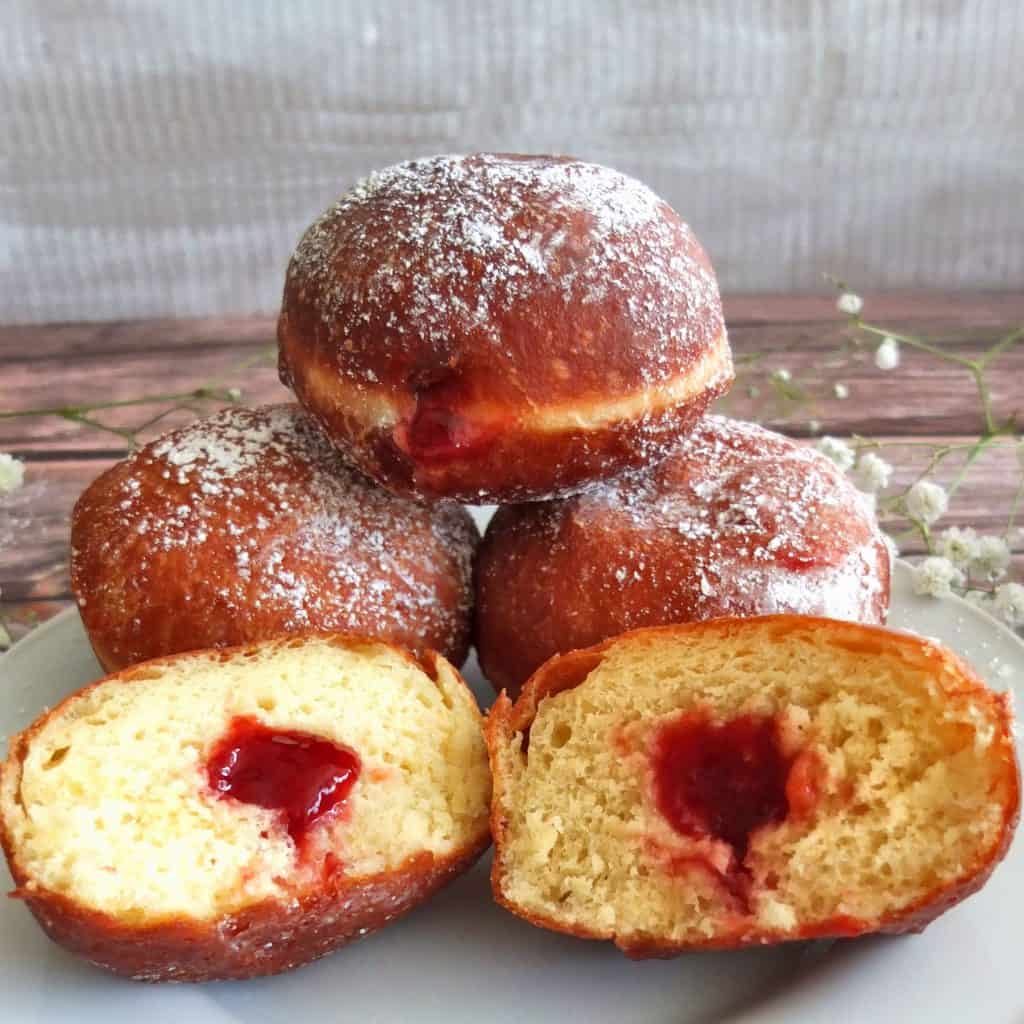
What are German donuts?
German donuts are made from deep-fried dough with powdered sugar. The dough is made with yeast. The egg contents in this pastry is relatively high because this prevents the donut from soaking up too much fat when being fried. The yeast ball is often filled with a jam and covered either with powdered sugar, granulated sugar or a sugar icing glaze.
Regional Names
Before we start, we need to address the regional variations in names for this German donut. I call it “Berliner” as I live in Bremen, and here it is simply called “Berliner.” However, its name depends on where you are. Here is a short overview:
- Berliner: West Germany (apart from Hessen and Bavaria), Mecklenburg, Switzerland
- Berliner Ballen: Ruhr area / Sauerland Region / Lower Rhine Region
- Faschingskrapfen: Austria – especially in Tyrol,
- Glaskrapfen: Austria, Hausruckviertel and Traunviertel
- Fastnachtsküchle/-küchelchen: Baden-Württemberg and Pfalz/Saarland
- Kreppel: Hessen, Rheinhessen (Rheinland-Pfalz), Thuringia
- Krapfen: Bavaria and Austria
- Pfannkuchen: East Germany
- Puffel: Aachen. [source wikipedia]
There you go. So now if somebody asked you “What is donut in German?” you can give him 9 options! For the sake of consistency, I am going to refer to this German Donut as “Berliner”.
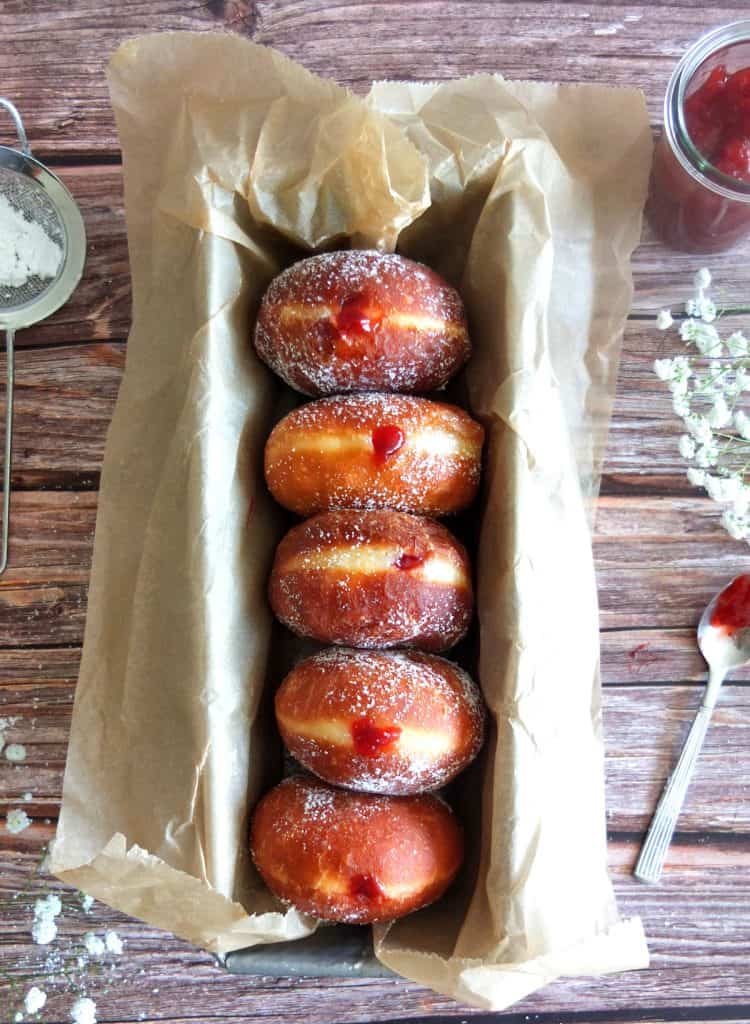
Traditional Donut Fillings
These Berliner pastry balls are often filled with some jam/ jelly, and the type is often dependent on the region.
- Southwest and North Germany - typical filling is red jam – such as cherry, strawberry or raspberry flavour. In
- Bavaria and Austria - apricot jam
- East Germany - plum jam
- Swabia and Franconia - rose hip jam
- Other recipes include fillings of whipped cream,egg nogg, vanilla pudding and chocolate.
A donut filled with mustard? German Humour...
As a joke, you might find German jelly donuts filled with mustard. But you will not know it until you bite into it. This is especially popular during German Karneval, or at midnight on new year's eve.
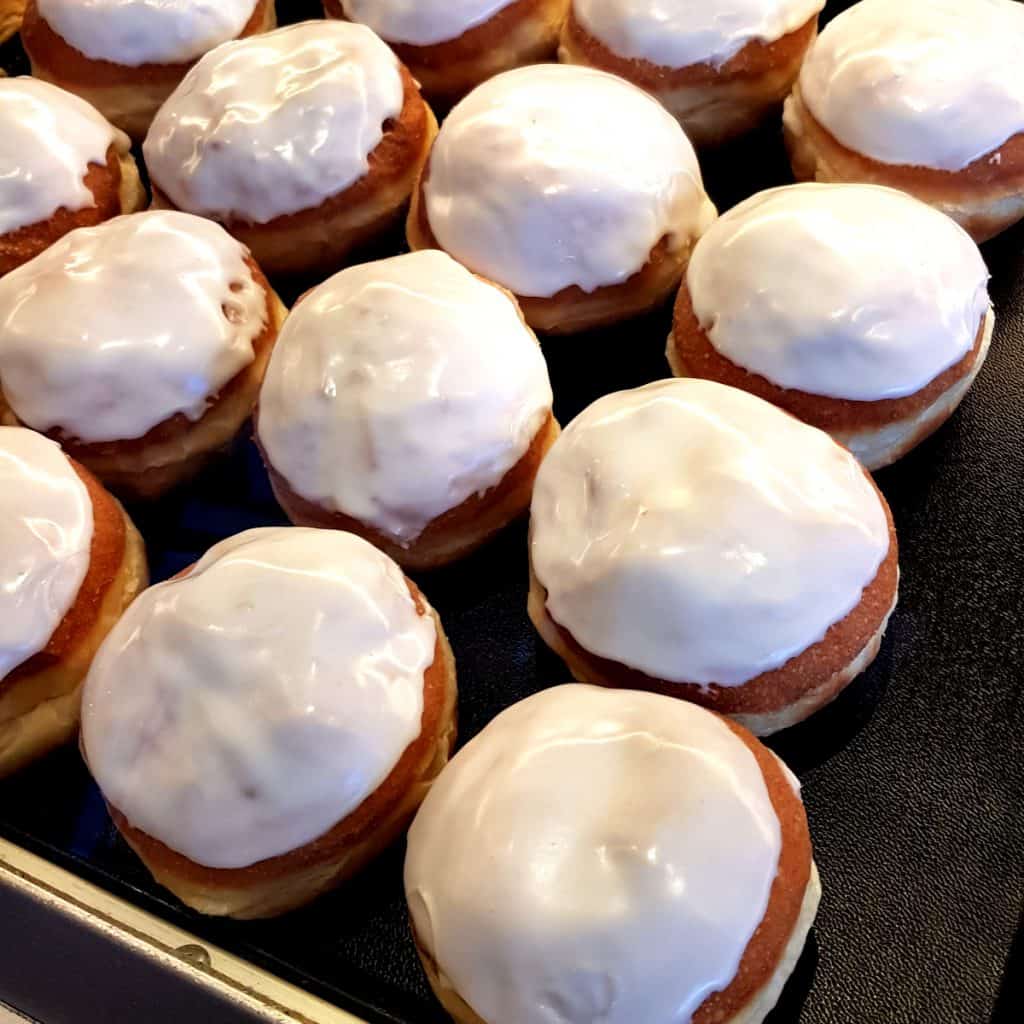
How to make Berliner Donuts:
These German donuts are not difficult to make. I have tried to write down my tips to help you make this a success.
Ingredients
- 200 ml /6.7 fl oz lukewarm milk
- 70 g /2.4 oz butter – at room temperature
- 500 g / 17.6 flour (Germany type 405, UK plain flour, USA pastry flour)
- 40 g / 1.4 oz sugar
- 2 teaspoon vanilla sugar (homemade or one packet)
- ½ teaspoon salt
- 7 g, one packet instant yeast
- 3 egg yolks - from medium eggs.
Useful kitchen equipment:
- A hand or stand mixer for kneading the dough
- A kitchen thermometer to be certain of the temperature of the oil when frying
- A thin (around 7mm) long piping tip.
Berliner recipe:
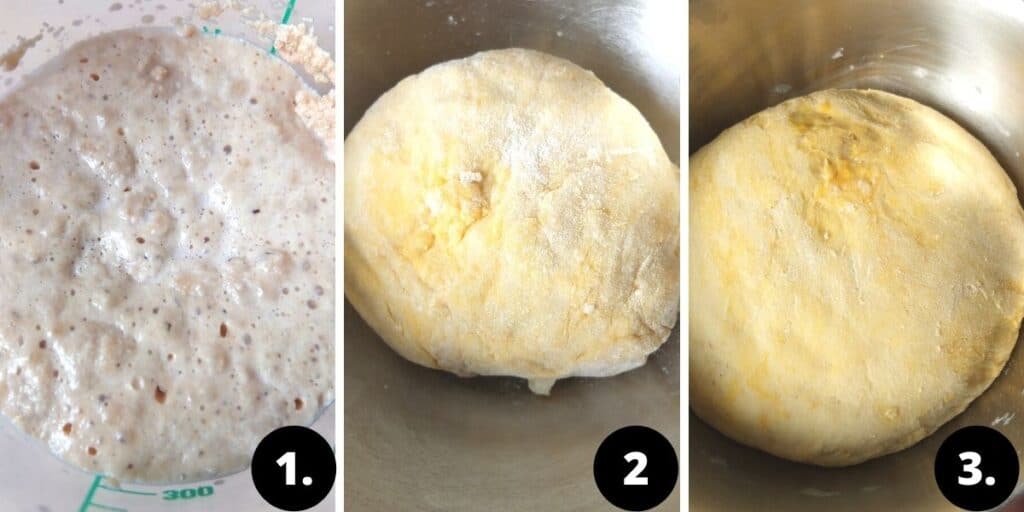
- Mix the sugar and yeast into the lukewarm milk. Leave to stand for 10 minutes. The yeast should start to bubble.
- Add the flour, butter, vanilla sugar, salt to a bowl. Pour over the yeast mixture and knead to a thick dough with a stand or hand mixer. Add the egg yolks one by one. Then knead the dough for about 5 minutes.
- Place the dough in a lightly greased bowl (prevents the dough from sticking) and cover it with a kitchen towel. Leave to rise for about 60 minutes.
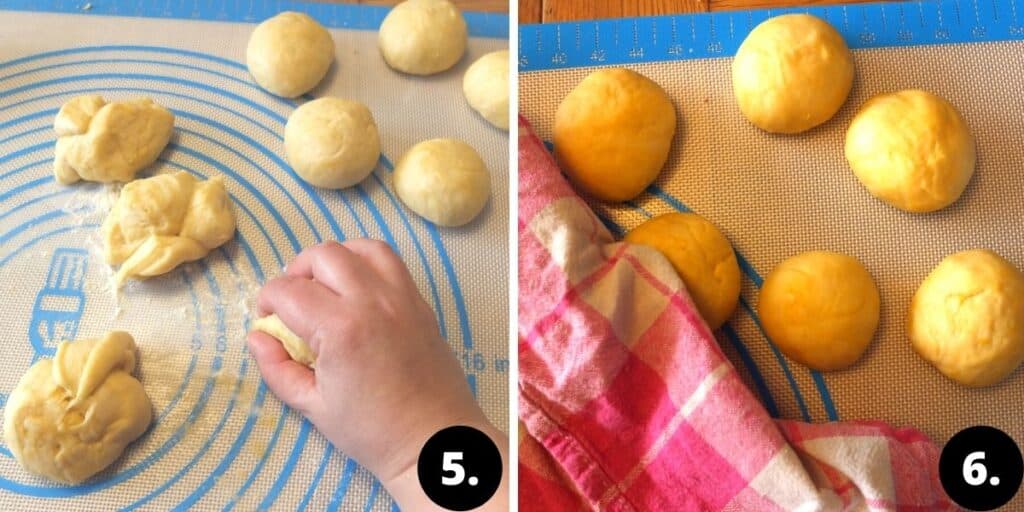
- Knead the risen yeast dough with your hands on a lightly floured surface. Then divide the dough into 12 even pieces. (For me they were approx. 60 gr each).
- Roll each dough into a ball. Using a circular motion with the palm of your hand, gently roll the dough on a floured surface to create a ball shape. The ball shape can also be created by rolling the dough between the palms of both hands using the same circular motion. The dough balls will enlarge during the final rising period.
- Place the balls on a lined baking tray and cover with a tea towel. Leave to rise for a further 30 minutes.
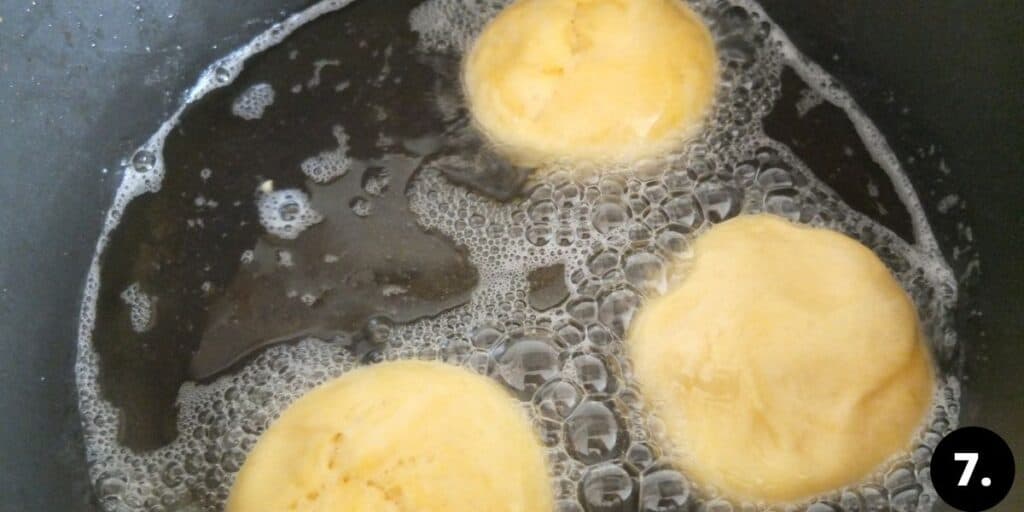
- Place the oil into a large pot and heat up. I recommend using a thermometer and leave the heat to rise to 170°C/338°F. If you don’t have a thermometer then wait until the oil forms bubbles on a wooden spoon and then turn down the heat. It is important that you don't cook your donuts too hot, as otherwise, the dough will not cook evenly.
- Fry each donut for approximately for 3 minutes on each side.
- Remove them with a slotted spoon and pat them dry on a kitchen towel to absorb the remaining grease. Leave to cool down for at least 20 minutes.
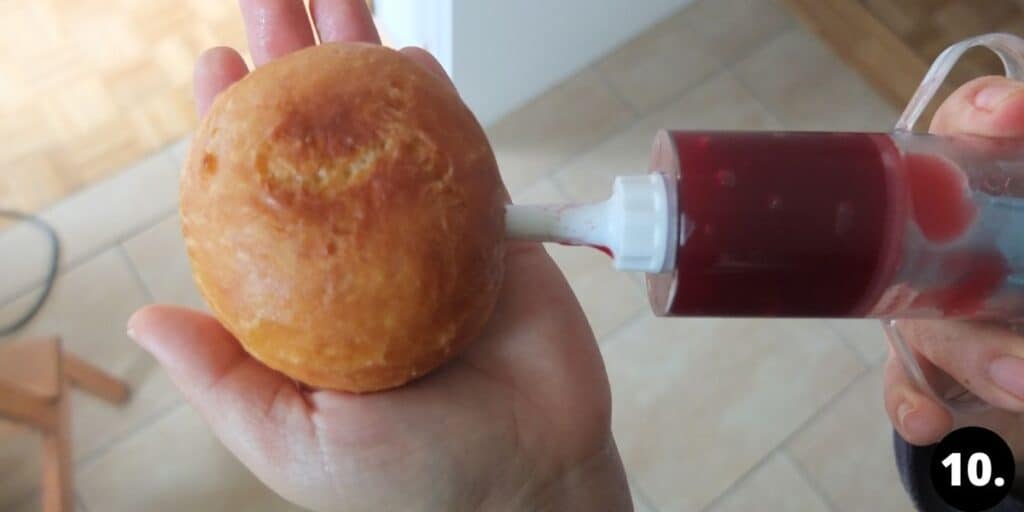
- Fill a piping bag (affiliate link) with the jam of your choice. If your jam comes with bits, run it to a sieve, as otherwise the pipe will get blocked. The piping tip needs to belong and narrow. (around 7mm). Dust each doughnut with some icing sugar before serving.
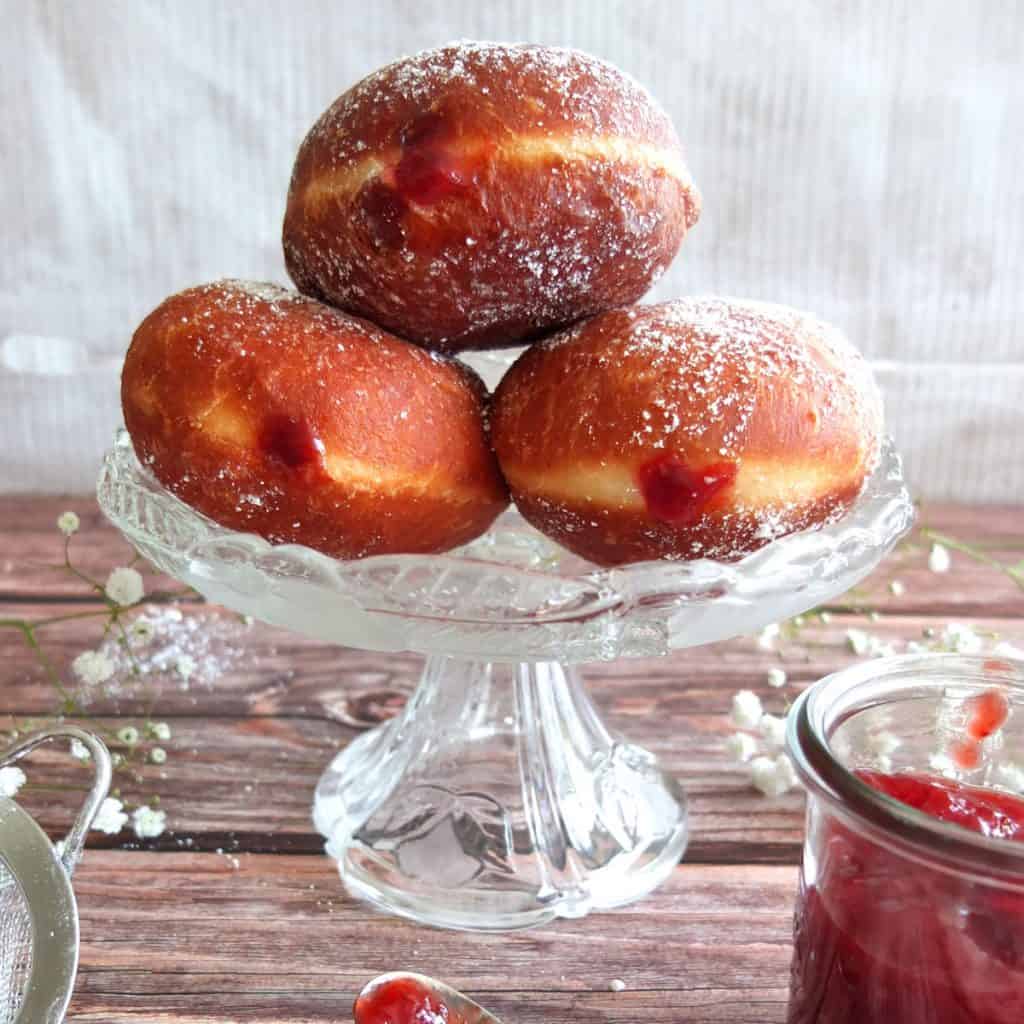
Troubleshooting
- My jelly donut is not round – it is important to get the donut as round as possible when forming them. Leaving them to rise after forming them should even out most wrinkles but it is important to get the dough as even as possible.
- My donut is dark from the outside and raw on the inside. – this means the temperature was too high. I recommend using a thermometer or a deep fryer with a temperature regulator. The temperature should be at 170 degrees for the donut to fry evenly.
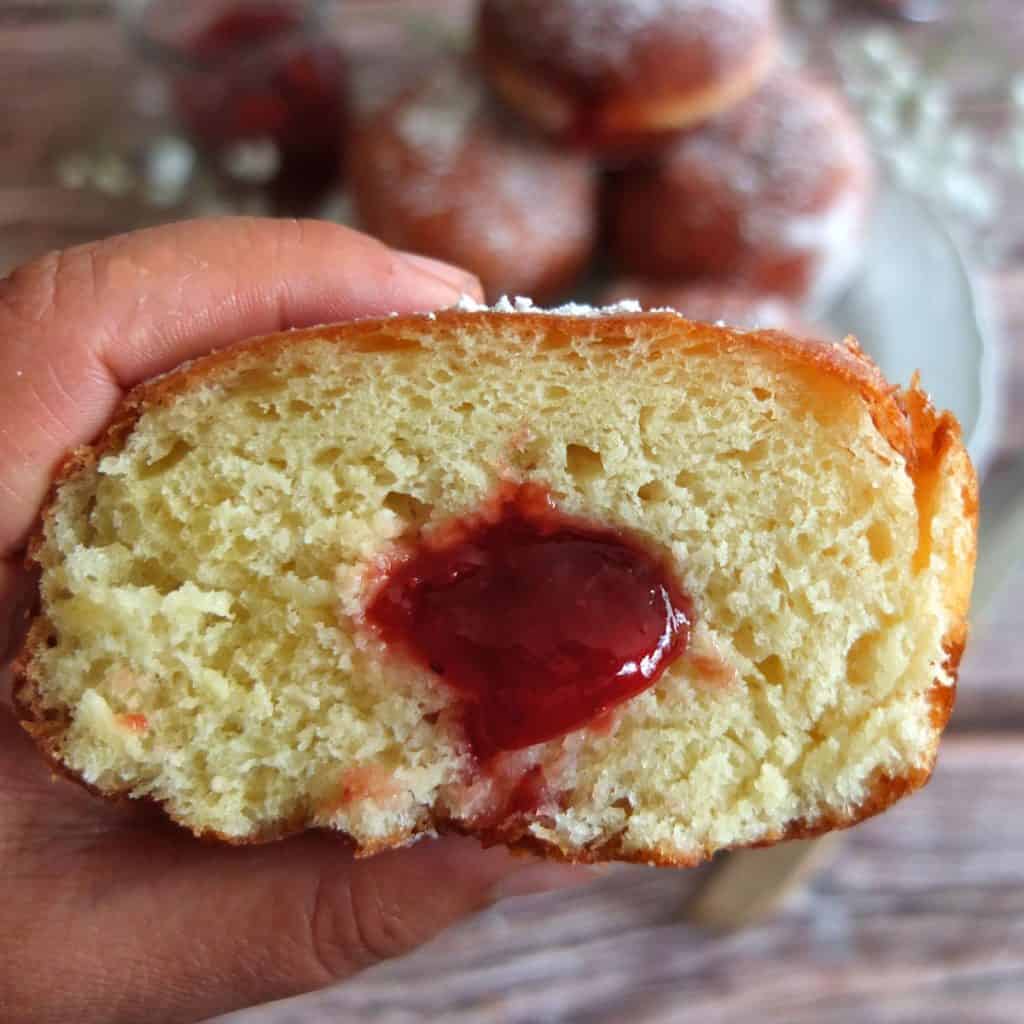
When to eat Berliners?
Today you can find Berliner jelly doughnuts in German bakeries all year round. Traditionally they are eaten during the German Carnival (Fasching or Fasnacht). On Rose Monday. In many families, part of the new year’s tradition is to eat a Berliner at midnight. Everybody bites into their doughnut at 12 pm and if you are unlucky, yours will be filled with mustard. They are also popular German Christmas Market Foods.
Berliners are the ultimate party food and perfect for celebrations. An advantage of Berliners is that because their fat content is so high, it means the alcohol takes longer to get into your blood. Although the high-fat content may not exactly be an advantage!
Storage Instructions
These German doughnuts are best when eaten fresh. They last a maximum a day. However, you can freeze them. Freeze them without the powdered sugar. Once defrosted you can reheat them in the oven.
History
According to a popular legend: the Berliner Donut was invented by a baker from Berlin in 1756. He was keen to serve as a Gunner for the king, Friedrich the Great. It turned out he was ill-suited as a soldier. However, he was not forced to leave the regiment and so he created the “Berliner Donut” as a thank you. He made the first ones in the shape of cannonballs. He had no oven, so he baked them in pans with hot oil instead. And so the Berliner was born.
However, as nice as it sounds it is a popular legend. In reality, these forms of fried pastries were popular in Germany since the 13th centenary. I don't really know why they gained so much popularity in Berlin in particular. (source, Irene Krauss 1999 - Chronik bildschöner Backwerke)
An iconic association with the Berliner donuts is the speech that US President JF Kennedy made in 1963 in West Berlin. It is one of the best cold war and anti-communist speeches at the time.
“Today, in the world of freedom, the proudest boast is Ich bin ein Berliner!... All free men, wherever they may live, are citizens of Berlin, and therefore, as a free man, I take pride in the words Ich bin ein Berliner!”
This was an uplifting speech for those living in West Berlin, who feared that they might be occupied by East Germany.
Some interpreted his words as translated ”I am a donut” with reference to the German Berliner donut. This is an urban myth in non-German speaking countries. It does make for a good story.
Other traditional German cakes you might be interested in
Recipe

Berliner Donut Recipe
Equipment
- hand or stand mixer
- kitchen thermometer
- piping bag (affiliate link) with thin, long, about 7 mm round nozzle
Ingredients
- 200 ml milk 6.7 fl oz, lukewarm
- 70 gr butter 2.4 oz - at room temperature
- 500 gr flour 17.6 oz - Germany type 405, UK plain flour, US pastry flour
- 40 gr sugar 1.5 oz
- 2 teaspoon vanilla sugar
- ½ teaspoon salt
- 7 g instant yeast (1 packet or 2 tsp)
- 3 egg yolks
For the filling
- 250 g jam see article for tradiional fillings.
To fry
- 750 ml vegetable oil such as sunflower oil. Alternativley use vegetarian lard
Instructions
- Mix the sugar and yeast into the lukewarm milk. Leave to stand for 10 minutes. The yeast should start to bubble.
- Add the flour, butter, vanilla sugar, salt to a bowl. Pour over the yeast mixture and knead to a thick dough with a stand or hand mixer. Add the egg yolks one by one. Then knead the dough for about 5 minutes.
- Place the dough in a lightly greased bowl (prevents the dough from sticking) and cover it with a kitchen towel. Leave to rise for about 60 minutes.
- Knead the risen yeast dough with your hands on a lightly floured surface. Then divide the dough into 12 even pieces. (For me they were approx. 60 gr/ 2oz each).
- Roll each dough into a ball. Using a circular motion with the palm of your hand, gently roll the dough on a floured surface to create a ball shape. The ball shape can also be created by rolling the dough between the palms of both hands using the same circular motion. The dough balls will enlarge during the final rising period.
- Place the balls on a lined baking tray and cover with a tea towel. Leave to rise for a further 30 minutes.
- Place the oil into a large pot and heat up. I recommend using a thermometer and leave the heat to rise to 170°C or 338°F. If you don’t have a thermometer then wait until the oil forms bubbles on a wooden spoon and then turn down the heat. It is important that you don’t cook your donuts too hot, as otherwise, the dough will not cook evenly.
- Fry each donut for approximately for 3 minutes on each side.
- Remove them with a slotted spoon and pat them dry on a kitchen towel to absorb the remaining grease. Leave to cool down for at least 20 minutes before filling.
Filling the donut
- Fill a piping bag (affiliate link) with the jam of your choice. If your jam comes with bits, run it to a sieve, as otherwise the pipe will get blocked. The piping tip needs to be long and narrow. (around 7mm). Dust each doughnut with some icing sugar before serving.



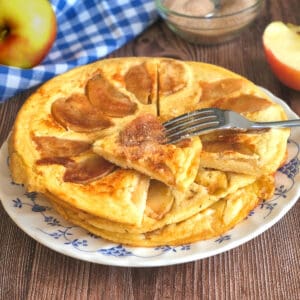
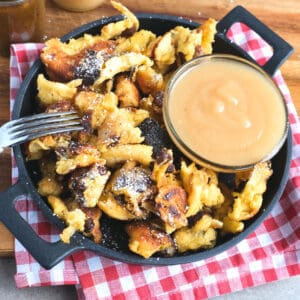
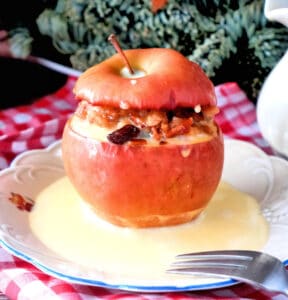
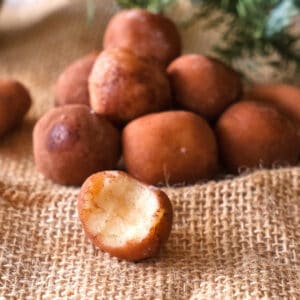
Susan Reynolds
My grandmother made what we called “Fedkeekels” (American spelling LOL). I’ve been searching for a recipe and these are very similar. My dad is now 89 and he felt like a kid again when he was eating them. I made strawberry jam and it reminded us if eating at gramma’s house. Thank you so much.
Marita
Hi Susan,
thanks for your comment. I am glad you enjoyed these German donuts.
Best Wishes
Marita
Robin
I'm considering this recipe for Fat Tuesday, but the calorie count has frightened me. Is it possible that 808 calories per donut is an error? I sure hope so - otherwise, it's way too fattening - even for Fat Tuesday!!
Marita
Hi Robin, you are right! I have automatic calculating calories, and I think it counted the oil as being in the dough, rather than being used for frying. I adjusted it. 🙂